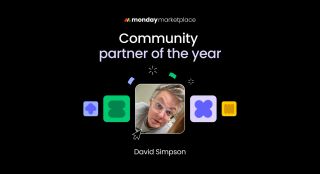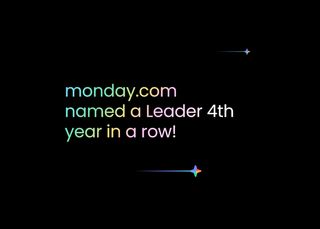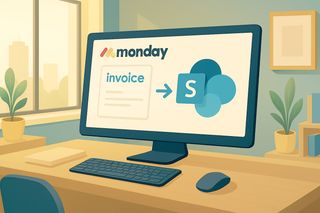It's not a competition – it's a relationship
If you've ever found yourself wondering whether "Agile" and "Adaptive" project management are the same thing, you're not alone. The terms are often used interchangeably, but there's a crucial distinction that can change how you approach your projects.
Here's the simplest way to understand it: Agile is a specific set of methodologies, while Adaptive is a broader characteristic that Agile exemplifies.
Think of it like this: Agile is a type of adaptive approach. All Agile is adaptive, but not all adaptive approaches are necessarily Agile.
What exactly is Agile? The philosophy with a manifesto
Agile is a formal, defined approach that originated in software development with the 2001 Agile Manifesto. It's built on four core values:
- Individuals and interactions over processes and tools
- Working software over comprehensive documentation
- Customer collaboration over contract negotiation
- Responding to change over following a plan
But Agile isn't just philosophy – it's practiced through specific frameworks with strict rules and rituals:
- Scrum: Uses fixed-length iterations (Sprints), daily stand-ups, and defined roles like Scrum Master and Product Owner
- Kanban: Focuses on visualising work on boards and limiting work in progress
- Extreme Programming (XP): Emphasises engineering practices like pair programming
In short: Agile is a prescriptive, iterative way of working with a clear rulebook.
So what makes something Adaptive? The flexible mindset
Adaptive Project Management is a broader, more flexible mindset. It doesn't prescribe specific ceremonies or roles. Instead, it describes the core principle of being able to adjust to change, regardless of the methodology used.
The key insight is that for many projects, initial requirements are uncertain or will change. Therefore, the project plan must be a living document that evolves as you learn more.
An adaptive approach could incorporate:
- Pure Agile frameworks (like Scrum)
- Hybrid approaches (e.g., a high-level traditional plan with agile execution)
- Tailored methodologies mixing elements from different sources
This aligns with what industry analysts like Gartner highlight when they discuss tools that support "multimethodology working within the same tool." These platforms aren't just for Agile teams, they're for any team that needs to adapt.
Enhance your workflows with David Simpson Apps
Discover powerful apps and integrations for monday.com, Atlassian, and Microsoft 365. Streamline processes, embed analytics, and boost collaboration.
Explore appsSide-by-side: How they compare
| Aspect | Agile | Adaptive |
|---|---|---|
| What it is | A specific set of methodologies and frameworks | An overarching mindset or characteristic |
| Origin | Software development (Agile Manifesto, 2001) | Broader project management theory |
| Structure | Prescriptive with defined rules and ceremonies | Flexible principle applied in various ways |
| Scope | Often applied at team level (e.g., development team) | Can be applied at team, project, or portfolio level |
| Best for | Projects with clear goals but uncertain paths (e.g., product development) | Any project in an uncertain environment where requirements may shift |
A real-world example: Marketing campaign
Let's say a company is launching a new marketing campaign.
An Agile approach would involve the content team working in two-week sprints with a backlog, daily stand-ups, and sprint reviews to demonstrate progress.
An Adaptive approach is the bigger picture. The project manager might start with a traditional plan but uses flexible tools to manage it. When company strategy shifts halfway through, the manager adapts the plan, re-prioritises tasks, and reallocates resources without derailing the project. They might use Agile techniques for execution, but the overall management is adaptive.
Which approach should you choose?
The answer depends on your context:
Choose agile when:
- You're in software development or creative product work
- Your team can commit to specific ceremonies and roles
- The end goal is clear, but the path to get there isn't
Choose an adaptive approach when:
- You need to blend different methodologies (e.g., some teams use Waterfall, others use Agile)
- Your project exists in a highly uncertain environment
- You need flexibility at the portfolio or program level
The bottom line: It's about flexibility, not labels
Agile is a recipe, while adaptive is a cooking style.
If you follow an Agile framework, you're being adaptive by definition. But you can be adaptive without following formal Agile methodologies by building flexibility and feedback loops into your process.
The most important takeaway is that modern project management isn't about choosing one "right" methodology. It's about having the tools and mindset to respond effectively to change, whether that means implementing pure agile, creating a hybrid approach, or simply building more adaptability into your current ways of working.
The goal isn't to be perfectly agile or perfectly adaptive – it's to deliver successful projects in an unpredictable world.
Further reading
Automate your workflows with David Simpson Apps
Discover powerful apps and integrations for monday.com, Microsoft 365 and more. Streamline processes, embed analytics, and boost collaboration.
View our apps on the monday marketplace





